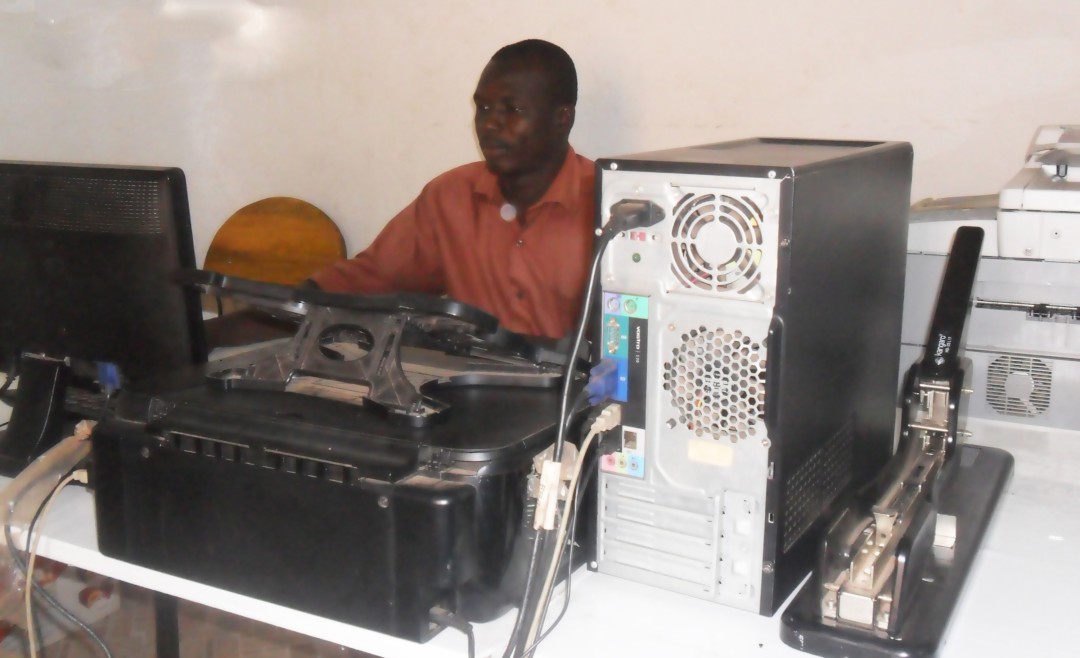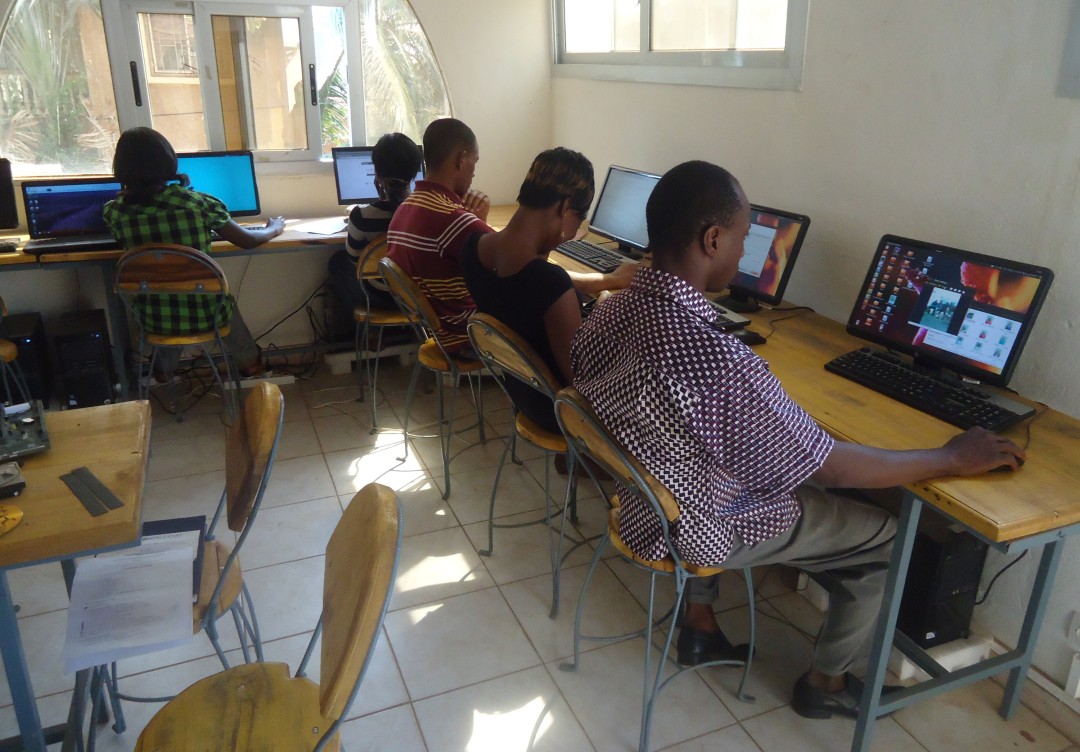Initiation to ICT
The project covered three activities: providing 130 youths with basic computer skills, together with a basic education; training 40 computer technicians to enable them to offer their services to local companies or to set up their own businesses as entrepreneurs; and finally, developing an internet platform to share job opportunities, with the content and design developed by the trainers and the students.
By the end of the project, 130 youths (of whom 34 were girls) were trained in information technology and 40 youths (of whom 6 were girls) were trained as computer technicians. These new competencies enabled the 130 youths to increase their professional capabilities (preparing quotes/plans, internet searches) and to better integrate the local economy. Of the 40 youths who followed the technical training, 11 were hired by local computing companies and 26 became self-employed. The internet platform was equally a success, frequently accessed by youths interested in gaining employment and learning about entrepreneurship.
AccEd, in partnership with “AJA Mali”, enables young people to access education or vocational training in Information and Communication Technologies (ICT).
Type
EducationDuration
March 2012 - December 2014Location
Bamako / MaliWith whom
AccEd
Website





Mali
Population
18.5 million (2017)
Per Capita Income
USD 770/year (2017)
Poverty rate *
41% (2009)
Literacy rate
33% (2016)
Human Development Index
182nd out of 189 countries (2018)
Mali has experienced conflict on a regular basis since its independence in 1960. The military coup in March 2012 triggered a political and security crisis and although peace negotiations were concluded in 2015, the situation remains volatile, preventing large-scale return of those who fled the country or are internally displaced. Fragile security in the northern regions is hampering economic recovery. The crisis has worsened the human development outlook; chronic food insecurity is affecting 25% of families. One in three children under-five suffers from stunting. Drought and conflict have increased the extreme poverty rate, rising from 48% in 2011 to 50% in 2013.
Sources: World Food Program, UNICEF, World Bank, 2016 Human Development Report, Human Development Indices and Indicators (2018 Statistical Update)
*The percentage of the population living below the national poverty line.